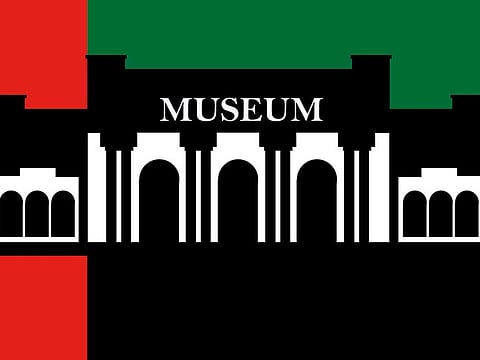Wanted: A National Museum of Emirati Art
As number of people visiting the UAE rises, it is important to showcase the art scene in the country, for art is a true reflection of our identity

It’s boom time for art in the UAE. The Sharjah Art Museum, established in 1995, was the very first institution dedicated to showcasing visual contemporary art in the region.
Since then museums, fairs and galleries have mushroomed in the country as the population has reached the eight digits and tourism has touched the 20-million mark. The UAE is now a cultural force to be reckoned with.
Today, as the profile of the UAE grows and with more and more visitors coming to the country, no doubt some of them wonder about what our own art looks like, who our artists are and what mediums do they use to create art?
Do we have sculptors? Are there nude works by Emirati artists? And how are women portrayed?
After all, art is a reflection of our identity. And yet despite the fast-paced developments — the Louvre Abu Dhabi being the grandest of our efforts to place the UAE on the global cultural map — there is no museum whose primary goal is the display and advancement of Emirati art.
Museums dedicated to national art are not uncommon around the world.
New York’s Whitney Museum of American Art showcases artists from Jackson Pollock and Jean-Michel Basquiat to the contemporary.
London’s Tate Britain provides an important counterweight to its more globally famous sister museum the Tate Modern.
There, British artists — including Tracey Emin, Anwar Jalal Shemza and Lucien Freud — are displayed side by side as they tell the story of modern Britain. In Germany, the Neue Nationalgalerie showcases Georg Baselitz alongside Marwan in an important statement on post-war German identity.
Where though can one see the artistic arc of modern Emirati identity? In the last few years, the Etihad Museum has opened in Dubai and along with its sister museums in other cities, it has been doing a fine job of explaining our traditions and heritage, our political history and perhaps even our future trajectory.
But what about who we are today as modern Emiratis?
The closest the UAE came to showcasing our modern artistic identity was during the Venice Art Biennial 2015, when Shaikha Hoor Al Qasimi, president of the Sharjah Art Foundation, was commissioned by the Salama Bint Hamdan Al Nahyan Foundation and the Ministry of Culture to curate the National Pavilion of the UAE.
That exhibition, ‘1980-Today: Exhibitions in the United Arab Emirates’, traced the history of the UAE’s art scene by celebrating artists who were associated with the Sharjah-based UAE Fine Art Society that was established in 1980. The exhibition then travelled to the UAE and was shown at the Flying Saucer in Sharjah for a few weeks. Another important exhibition titled ‘But We Cannot See Them: Tracing a UAE Art Community, 1988-2008’, curated by Maya Allison recently took place at NYU Abu Dhabi Art Gallery in which the important history and contributions of the Dubai-based Flying House were highlighted. The Flying House brought together important Emirati artists including Nujoom Al Ganem, Hassan and Hussain Sharif as well as Mohammad Kazim who represented the UAE at the Venice Biennial 2013.
However, such exhibitions, as important as they are, and despite both coming with significant accompanying publications, are ultimately temporary displays. The UAE needs today a national museum dedicated to the best of Emirati art. This institution would not only collect and display art, but also commission studies and hold seminars, talks and conferences on Emirati art. Its remit could also be expanded to include UAE resident artists. After all, they form as much of the country’s identity as citizens of this globalised nation. Where can one see the early oil paintings of Abdul Qadir Al Rais, the caricatures that made late Hassan Sharif the brave and candid artist he was, the reliefs of Dr Najat Makki and the monumental murals of the Italy-based Fatma Lootah? The answer is they are not on display. In 2014, I travelled to Kuwait where I was able to purchase two works dating back to the pre-Independence era of the UAE, belonging to Emirati artist Abdul Qadir Al Rais, that depict Palestinian refugees. One of these important paintings was shown at the Second Triennale-India in New Delhi in 1971, probably making Al Rais the first Emirati artist to showcase abroad. That work has since been restored and is now sitting idly in storage.
The establishment of the National Museum of Emirati Art need not be expensive or time-consuming and can be set up within a relatively short period of time. No lavish glass building is required. In fact, the conversion of a modernist structure such as a hotel, hospital or a school would be a fitting statement about our dedication to modernism in the UAE. The UAE federal government already has a sizeable collection of Emirati art at the Ministry of Culture, part of which was on display in a temporary gallery at the Ministry’s offices on Al Muroor Street in Abu Dhabi.
The National Museum of Emirati Art would not only display works from its own collections, but also initiate long-term loans from other collections in the country, including the Shaikh Mohammad Bin Rashid Collection, the Sharjah Art Foundation collection and the Salama Bint Hamdan Al Nahyan Foundation collection.
Expatriate residents and visitors often wonder what it means to be an Emirati. Art can, along with human interaction, articles, books, poetry, music and films, give a better understanding of who we are — not only to the visitors and expatriates, but also to a new generation of young Emiratis. In this case, a picture is worth much more than a thousand words.
Sultan Al Qassemi is a UAE-based writer.
Sign up for the Daily Briefing
Get the latest news and updates straight to your inbox


